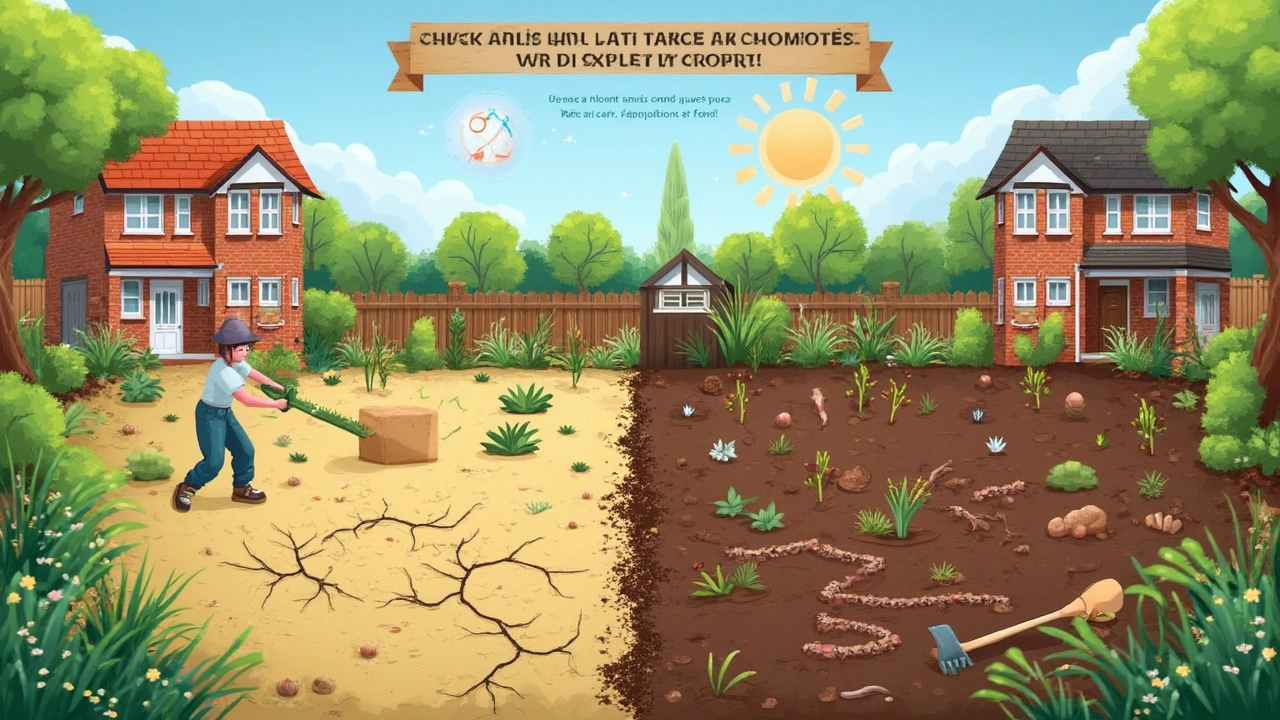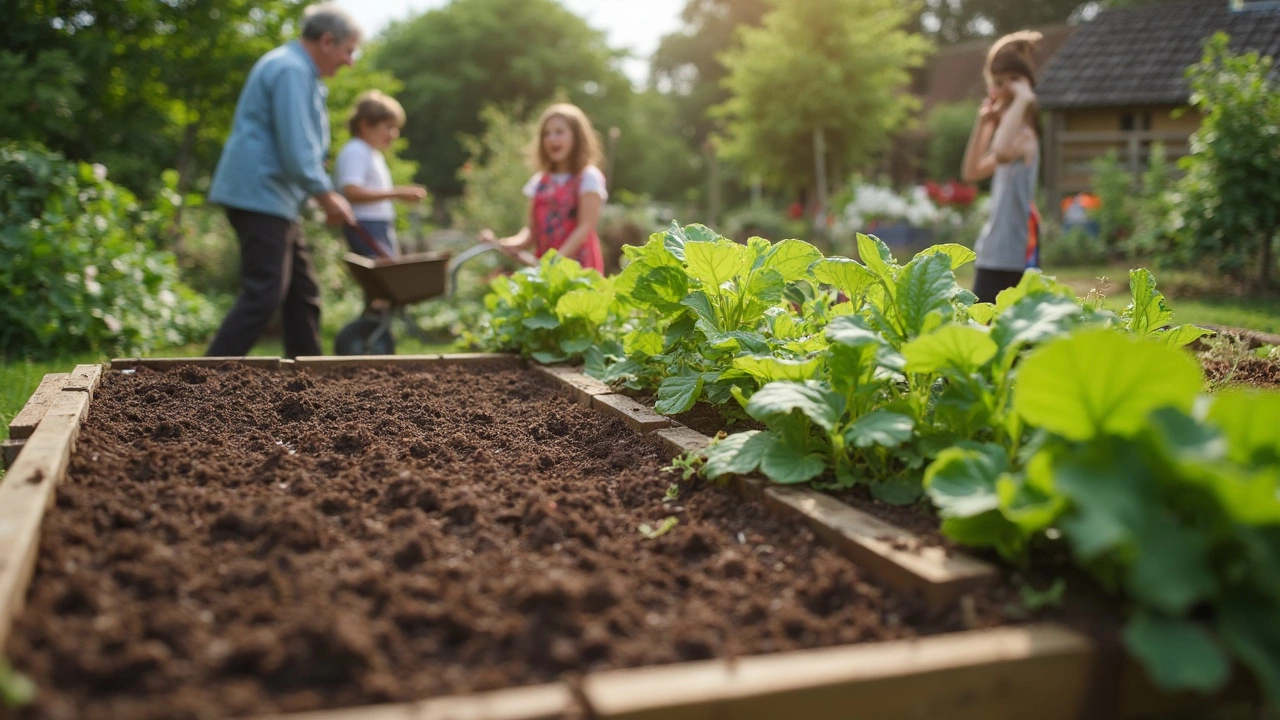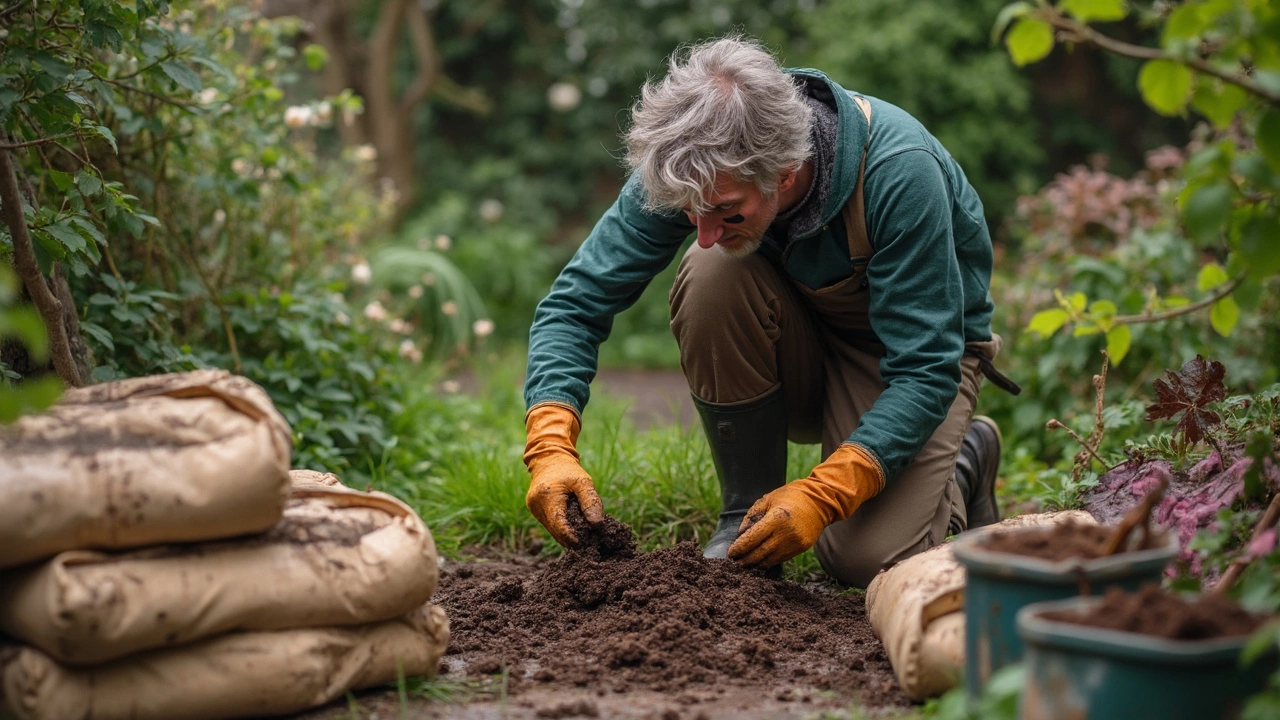There’s a classic Brighton joke that you’ll know you’re out for a walk in winter when you gain half a stone in clay stuck to each welly. If you’ve ever tried digging a border around here after some rain, you know what I mean—the shovel just smears it, and you end up doing more damage to your back (and pride) than to the ground. If you’ve googled for a fix, you’ve seen the same bit of advice everywhere: “Just add sand to clay soil! Problem solved.” But that tip, as popular as Sunday roasts, is full of potholes. No prizes for guessing—mixing sand with clay isn’t the easy fix most folks hope for. Why is that? Let’s break it down and see what really works in our sticky, sometimes stubborn, southern soil.
Why Do People Add Sand to Clay Soil?
Clay soil is the stuff of garden legend for all the wrong reasons. Step on it after a rain and you’re suddenly ten feet tall with muddy platforms. It stays soggy for ages, then bakes to concrete in the sun. No wonder everyone’s on a quest for a magic bullet. You’ll hear the "add sand" idea from novices and old timers alike. The logic is sound enough on paper: clay = compact, sticky, bad drainage; sand = loose, gritty, good drainage. So, mix the two and you should wind up with Goldilocks soil, right? Not too tight, not too loose.
This idea is so sticky it’s found in countless gardening books and websites. Some garden centres, a bit cheekily, even have bags of sand labelled “clay breaker.” But does this hack actually work? Or is it a classic tale of ‘sounds good in theory, totally backfires in practice’?
In truth, clay soil has particles much smaller than sand. If you want a visual, picture marbles (sand) and flour (clay). Layer flour and try to pour sand in—where does it go? Right into the tiny spaces between particles, making the mixture denser, not looser! There’s a reason so many gardeners spend years fighting clay, and why clever fixes are always in demand.
The Science Behind Mixing Sand and Clay
It’s not just a folksy myth that adding sand to clay can go wrong. There’s real science behind the mishap. When you mix a little sand into a lot of clay, you’re asking for trouble. The Royal Horticultural Society (RHS) warns that, unless you use huge amounts—think 50% or more by volume—you’ll get a soil even more compact and rock hard than when you started. Instead of drainage, you create something called "concrete soil." That’s not a metaphor—it’s as heavy as a paving slab and about as useful for growing carrots.
So, why does this happen? Well, clay particles are very fine and sticky. Sand, by contrast, is coarse and gritty. When mixed in small or even moderate amounts, the sand just fills in gaps between the clay particles, reducing air space and compacting everything. There’s a fair bit of research on this, not just garden chat. One 2016 study by UK soil scientists found that “amending heavy clay soils with less than a 1:1 ratio of sand leads to denser, less-permeable soils, not improvement.” Want the ratio that works? Add a whopping 50-70% sand, by volume. For the average gardener, that’s about two tonnes of sand per raised bed. Unless you’re the Hulk or run a sand quarry, that probably isn’t happening.
Here’s an eye-opener: if you add builder’s sand, which contains fine particles, it’s even worse. The fine grits mesh with the clay and create a texture very similar to hardpan, a gardener’s nightmare. In Brighton’s famously wet winters, those beds turn into shallow ponds and every plant’s roots start to rot. Adding sand isn’t just ineffective at common ratios—it can be downright harmful to your soil structure. No wonder my friend Archie nearly gave up gardening after hauling ten bags of sand into his veg patch, only to find puddles and weeds where he’d hoped for spuds.
| Material | Particle Size (mm) | Impact on Clay Soil |
|---|---|---|
| Clay | < 0.002 | Very compact, sticky, slow drainage |
| Sand | 0.05 - 2.0 | Needs over 50% to open clay structure |
| Builder's Sand | Varies, often coarse + fine | Fills pores, risks concrete-like soil |
| Sharp Sand (Horticultural) | 0.5 - 2.0 | Better than builder’s, but needs volume |

What Actually Happens When You Add Sand to Clay?
So, let’s say you go for it. You bring home ten bags of sand and dig them into your heavy clay. Optimism is high. Here’s what happens next:
- In small quantities (a bag or two per square metre), sand simply disappears into the clay. The result? No drainage, no texture improvement, just wasted muscles and money.
- If you add builder’s sand, which often has lime and salts, you might get a crusty white layer or stunted growth—some veggies, like beans, are especially sensitive.
- With larger amounts (a 1:1 mix of sand to clay), you create something approaching sand-clay cement. This is disastrous. The soil might suddenly drain after heavy rain, but turns rock hard at other times. Roots struggle to push through. I’ve seen spades literally bounce off these patches after one dry summer.
- Even the so-called “sharp sand” needs to be used in massive bulk to have any benefit. Most people give up before they reach the right amount—imagine wheelbarrowing sand for hours and still not seeing a change!
- Microbes, worms, and other good soil life suffer if the mix is off. Healthy soil is alive, but compacted sandy clay can suffocate bacteria and drive earthworms away.
- Plants that love drainage, like tomatoes and lavender, develop yellow leaves or just rot at the stem. Lettuce and spuds get root rot. Even the grass can start thinning out.
A few Brighton allotment holders tried a big experiment in 2020—building one bed with sand, another with organic mulch, and the last as control. The sand bed failed miserably, producing sad-looking carrots and rock-hard clods by late summer. The mulch bed, meanwhile, had fluffy, dark soil and armfuls of beans. Obvious winner.
Better Ways to Improve Heavy Clay Soil
So if sand isn’t the ticket, what’s the actual answer for us heavy clay gardeners? Good news: you’ve got options that don’t involve shifting metric tonnes of beach onto your allotment. Here are a few tried-and-tested ideas that work well around Brighton and beyond:
- Organic Matter: By far, the most effective way to lighten clay soil is adding organic material. That could be homemade compost, well-rotted manure, leaf mould, or even bark fines. Every time you add organic stuff, worms and microbes get busy. They mix it through, opening up pore spaces and creating little pathways for water and roots.
- Autumn Digging: Dig in organic matter in autumn. Our clay stays wet and workable then. If you leave the surface rough, frost and rain will naturally break it down. Come spring, it’s crumbly and much easier to manage.
- Mulching: Put down a thick layer of mulch (about 5cm) every winter. Use compost, leaf mould, or wood chips. Over time, rainfall and worms carry it deeper, and the soil starts to loosen up. Esme, my seven-year-old, loves looking for worms in the mulched beds—let’s just say, there’s never a shortage.
- Cover Crops: Planting things like clover or annual rye grass over winter draws nutrients up and their roots keep the soil structure open. When you dig them in before spring, you boost organic content even more.
- Raised Beds: If you’re desperate for fast results, build raised beds filled with a good mix of loam, compost, and chipped bark. You can ditch the worst of the clay in the bottom and give your veggies a head start.
- Gypsum: Some gardeners ask about gypsum (calcium sulphate). It can help bind clay particles together, creating more spaces. But its effects are mild and better for certain clays. Don’t expect miracles on our dense, sticky Brighton stuff—but worth a try if you prefer a less physical intervention.
There’s another secret weapon: patience. Each year you add organic matter, your soil gets better. By year three or four, that sticky clay feels more like rich loam. It took my own patch six years from ‘boot-gluing bog’ to beds you can dig with a hand fork.
| Method | Time to Results | Work Involved | Effectiveness |
|---|---|---|---|
| Adding Organic Matter | 1-3 years | Medium (a few hours a year) | High |
| Adding Sand | Immediate (negative), long-term (worse) | Very High | Low/Negative |
| Mulching | 1-2 years | Low | High |
| Cover Crops | 1 year | Low | Medium-High |
| Gypsum | 2-3 years | Low-Medium | Low-Medium |
| Raised Beds | Immediate | High (initial build) | Very High |

Tips for Brighton Gardeners (and Anyone Stuck with Clay)
Struggling with Brighton’s infamous clay? You’re not stuck. Here’s some local-tested advice:
- Never dig or walk on wet clay. This just compacts it further. Wait until it’s just moist, like chocolate cake that’s just come out of the oven—not sticky, not bone dry.
- Mix in compost every chance you get. Garden waste and kitchen peelings turn into black gold for your plot. Esme and Marlon still argue over who gets to scatter the compost—nothing beats a bit of family competition for good soil.
- If you buy manure, make sure it’s well-rotted. Fresh stuff can scorch plants and attract flies. My neighbour swears by manure that’s aged a year, turned every few months. His beans are taller for it.
- Don’t bother with small quantities of sand. The only sand you want in your garden is in the kids’ play area.
- For drainage, make mini trenches or French drains along beds prone to flooding—you’d be shocked what a few cleverly-placed gravel channels can do.
- Grow the right plants. Some perennials—like dogwoods, irises, willows—love damp feet. For veggies, stick with potatoes, brassicas, and runner beans until your soil improves.
- If you’re keen on raised beds, start small. One or two, fill with a good mix, and use your best compost. You can always expand later if it works for you.
- Remember, Brighton’s clay soils hold plenty of nutrients—once you open them up, your crops will be lush and plentiful. Don’t curse your soil: improve it. It’s a long game, but the payoff is worth it. Plus, you can amaze the neighbours when your garden finally bursts with flowers, fruit, and veg.
If you take just one thing from this, it’s to ditch the sandbags and pick up that compost fork. Your back—and your garden—will thank you.
